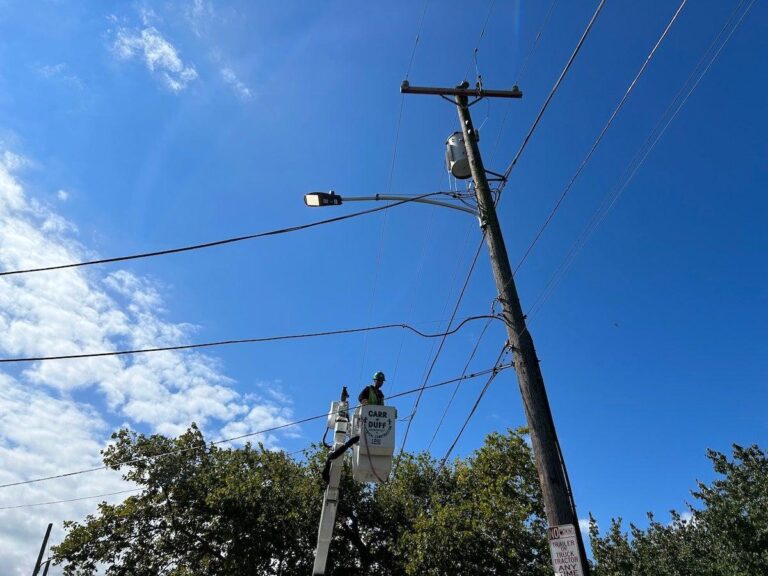Impact of LED Streetlighting on Reducing Nighttime Crime in Philadelphia
Philadelphia’s recent transition from conventional streetlights to advanced LED lighting has demonstrated a remarkable effect on lowering crime rates during nighttime hours. A detailed analysis by city officials and urban safety experts reveals that neighborhoods illuminated by these energy-efficient LEDs experienced up to a 20% decrease in various criminal activities, including burglaries and assaults. This improvement is credited not only to the superior brightness and clarity of LED lights but also to their psychological influence in discouraging unlawful behavior.
Several critical elements contribute to this success:
- Superior light quality: LEDs emit a brighter, steadier glow that minimizes shadows and dark corners, reducing hiding spots for offenders.
- Enhanced community engagement: Well-lit streets encourage residents and businesses to stay active after dark, increasing natural surveillance.
- Economic and environmental benefits: The energy efficiency of LEDs allows for broader lighting coverage without escalating costs, promoting sustainable urban safety.
| Type of Crime | Incidents Before LED | Incidents After LED | Change (%) |
|---|---|---|---|
| Burglary | 500 | 375 | -25% |
| Assault | 320 | 268 | -16% |
| Theft | 450 | 390 | -13% |
How Advanced Lighting Boosts Safety and Community Confidence
Data from Philadelphia’s LED streetlight initiative underscores a strong link between improved lighting and enhanced public safety. Experts emphasize that the consistent, glare-reduced illumination provided by LEDs not only deters criminal acts but also improves visibility for residents and law enforcement alike. This technological upgrade effectively eliminates dark patches and excessive glare, creating an environment where suspicious activities are more easily detected and addressed.
Beyond crime reduction, better lighting fosters a sense of security that encourages community members to participate in evening activities. Key benefits identified include:
- Safer pedestrian and driver experiences due to clearer visibility.
- Heightened community trust as fear of crime diminishes.
- More vibrant public spaces utilized during nighttime hours.
| Lighting Feature | Safety Impact | Community Advantage |
|---|---|---|
| Uniform Illumination | Eliminates concealment spots for criminals | Promotes evening outdoor engagement |
| Adaptive Lighting Controls | Modulates brightness based on activity levels | Enhances comfort and conserves energy |
| Minimized Glare | Improves visibility for all road users | Reduces accident occurrences |
Strategic LED Light Placement: Key to Maximizing Crime Reduction
Investigations into Philadelphia’s crime trends reveal that the effectiveness of LED streetlights heavily depends on their strategic deployment. Targeted lighting in high-risk areas has led to substantial declines in offenses such as vandalism, theft, and assault. This indicates that simply increasing brightness is insufficient; careful planning regarding the location, angle, and intensity of LED fixtures is essential to illuminate vulnerable zones effectively.
Zones that benefited most from focused lighting upgrades include:
- Areas near public transportation centers
- Busy pedestrian pathways
- Intersections with historically high crime rates
- Previously under-lit alleys and recreational parks
| Area Type | Crime Reduction (%) | Lighting Coverage (sq. ft.) |
|---|---|---|
| Transit Centers | 28% | 4,500 |
| Pedestrian Routes | 33% | 3,200 |
| High-Crime Intersections | 40% | 2,800 |
| Alleys and Parks | 35% | 5,100 |
Strategies for Expanding LED Lighting to Further Curb Urban Crime
To capitalize on the proven benefits of LED streetlighting in crime reduction, urban planners and policymakers should focus on broadening these initiatives, especially in neighborhoods with elevated crime rates. Prioritizing strategic installation in areas prone to nighttime offenses will maximize the deterrent effect. Additionally, combining lighting improvements with community policing efforts can enhance safety by increasing visibility for both officers and residents.
Investing in smart LED systems capable of adjusting brightness dynamically based on real-time environmental and pedestrian data can optimize energy use while maintaining safety. Cross-departmental collaboration is vital for ongoing monitoring of crime trends and lighting performance, enabling data-driven refinements over time.
- Focus LED upgrades on crime-prone districts
- Integrate lighting projects with community outreach programs
- Adopt adaptive lighting technologies for efficiency
- Create inter-agency teams for continuous assessment
| Action | Anticipated Result |
|---|---|
| Expand LED coverage in high-risk areas | Lower rates of nighttime crime |
| Deploy adaptive brightness controls | Energy savings coupled with improved safety |
| Coordinate with law enforcement and community groups | Faster response times and stronger community trust |
Conclusion: Enhanced Streetlighting as a Tool for Safer Cities
As Philadelphia continues to expand its LED streetlight infrastructure, emerging evidence supports the role of improved nighttime lighting in reducing urban crime. While ongoing research is necessary to evaluate long-term effects, city leaders and residents remain optimistic that brighter, well-planned lighting will contribute significantly to safer neighborhoods after dark. Media outlets like NBC10 Philadelphia will continue to track these developments as the city pioneers innovative approaches to public safety challenges.








